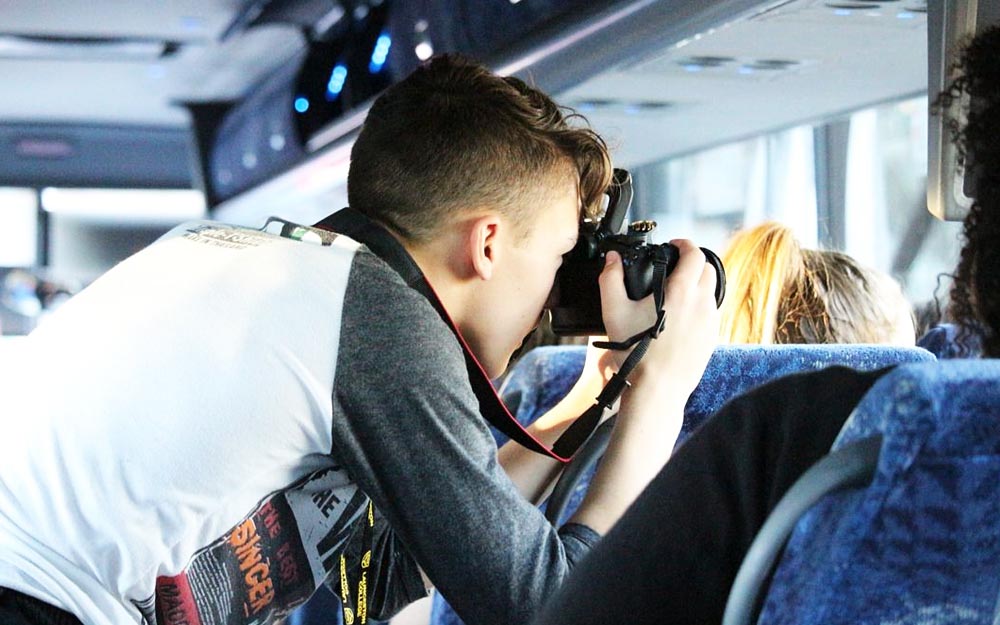Planning an excursion or tour for your students can be rewarding yet challenging and – more often than not – time consuming! With an ever-increasing number of regulations, logistics obstacles and pressures from leadership surrounding the quality of activities and learning outcomes, there has never been a better time to outsource your programs and tours.
First step is to request a number of itineraries from various tour organisers. But how can you ensure your school and students are truly getting the most educationally beneficial tour? And how can you accurately determine which tour provides the best value for dollar? Unfortunately, tours are not always as they seem, and tour providers can leave unexpected costs or exclusions out of their glossy brochures. This can lead to an array of headaches down the track for teachers, students, parents and leadership.
To help make this process clear, transparent and most importantly; easy, we have developed this handy ‘how to’ blog, to ensure you are comparing apples with apples, helping you select the very best tour for your students.
1. ‘Free Time’
While the idea of ‘downtime’ after a long day of activities may sound nice in theory, it can often come with an array of unforeseen complications for the teachers supervising in the tour. More often than not, free time is allocated to ‘fill-out’ a day when a tour budget does not permit extra activities. This typically results in lost opportunities, bored students and disjointed activities.
When considering ‘free time’, teachers should contemplate the following.
- Who will supervise students while they are on free time?
- Where is the group located for the allocated free time?
- Will there be hidden expenses associated with free time (local activities, food cost etc)?
- Are there other more beneficial activities that can run in that time period?
- Will the hidden costs of free time outweigh the cost of an activity run in its place?
Teachers have told us that in hindsight, they find free time to be too much work. What can often be pitched as a ‘well-earned-break’ to recharge the batteries, ends up being a headache for the lead teacher, who now needs to supervise the entire tour group with no planned activities. Further to this, students often end up spending more money while on free time than if for an activity was included in that time slot.
When comparing itineraries from different tour providers, take a note of the amount of included free time (if any), the duration of each free time session and the location in which the free time will occur. Only after considering the above can you accurately compare two (or more) tour itineraries.
2. Tours vs Workshops
One of the most exciting parts of reviewing your itinerary will be browsing through all of the included activities, sights, locations and venues. While this may seem like a straight-forward way of comparing tours, there is usually more to these activities than what first meets eye. Tours, guided tours and workshops can be the difference between an average tour and an extraordinary tour.
While many tour operators incorporate ‘tours’ of attractions, this is not the same as a guided tour – and certainly not the same as a workshop. For instance, if your itinerary states you will be touring a museum, you will be doing exactly that. Walking a specific section of museum, typically unaccompanied. With a guided tour will have a knowledgeable tour guide, walking the exhibit/attraction with you, giving your students all of the relevant, educationally beneficial information that they need to maximise the tour experience. If your visit to the museum includes a workshop, students will benefit from an educational, experiential learning-based experience, filled with genuine learning outcomes. This is even more so if the workshop has been custom designed for your group.
When considering tours vs guided tours vs workshops, educators should contemplate the following.
- What are the learning outcomes students will receive from the experience?
- Are students simply visiting a location or are they learning through ‘doing’?
- Are there workshops available at the location, which haven’t been included in the tour?
- Have guided tours been complemented with a workshop afterwards?
By ensuring you have workshops included in your tour, you ensure students will receive the maximum level of genuine learning outcomes. So, when comparing itineraries, ensure you take note of the experience included at each location. Is it simply sight-seeing, or is there value to the inclusion?
3. Experiential Learning Activities
The research is clear. Students retain information best when ‘doing’, as opposed to being told. This is why experiential learning-based activities are crucial to any school tour or excursion. By including genuine, curriculum-linked, experiential learning-based activities in your tour, students will maximise their learning outcomes – and in turn, their overall enjoyment.
With this in mind, when comparing itineraries, take note of the amount of experiential learning activities that have been included in your tour. These can be found in workshops, clinics, classes, themed guided tours, Q & A sessions and simulations. If your tour is heavy in sightseeing and self-guided tours, you might want to reconsider the value of that particular itinerary.
When reviewing itineraries, take note of the follow.
- Does the tour include experiential learning activities?
- Are these activities relevant to the desired learning outcomes?
- Do the activities align with your curriculum?
- Will your students enjoy participating in the proposed activities?
One of the key measures for weighing the value of an experiential learning activity is your initial reaction to it. Does it spark your interest? Did you know that this activity existed? A truly unique tour should have one or two ‘hidden gems’ that will both excite your students and be educationally rich in learning outcomes.
4. Meals
Does your tour include overnight accommodation? If so, you’ll need to consider meal inclusions. First, you’ll need to consider your individual meal preferences. Do you want to plan meals on the fly, have everything pre-planned, or a mixture of both? Having meals included can be beneficial for a number of reasons. The most pertinent reason for having meals included is that all costs have been incorporated into the tour price. Parents will be able to accurately budget for the tour, knowing that meals are included. This can, however, operate as a double-edged sword. Including meals in your tour can often lead to a higher price, when compared to other itineraries which do not include meals. Therefore, it’s important to ensure all itineraries have similar or the same meal inclusions, to ensure you are comparing apples with apples.
When comparing itineraries, teachers should make note of the following.
- Has the itinerary met your meal requirements?
- Are the included meals located at a convenient location?
- Is it appropriate for lunches to be included, or would it be easier to pick up something on the day?
- Do both itineraries have the same number of included meals? If not, can you request extra meals to be added/remove?
By ensuring you take note of meal inclusions and exclusions, you can be sure that you are evaluating each itinerary with equal weight. Make sure you take note of any price differences and determine whether that increase is attributed through meal allocations.
5. Custom Designed vs Off the Shelf
The final piece of the puzzle is determining whether your itinerary has been custom designed with your school, students and learning outcomes in mind, or whether it is a generic off the shelf tour. While there are pros and cons with both of these options, having a tour that is custom designed for your school is usually far superior. Not only does it ensure you are participating in the most educationally relevant tour for your students, curriculum and budget, but typically results in the most relevant, latest and very best programs/activities currently available.
When tours are custom designed, an itinerary development expert researches the most relevant and current activities and experiences available. This is completed the day they begin working on your itinerary. Off the shelf tours typically incorporate providers and activities which have been available for a number of years. While this can be beneficial in keeping some costs down (through relationships formed with suppliers), it also means that you may not be receving the most relevant, up-to-date tour.
Off the shelf tours offer consistency, quick turn-around times and confidence in the fact that you know what you’re going to get. Custom-designed tours offer unique, educationally rich experiences, selected to directly reflect your school’s curriculum and desired learning outcomes. They are also designed with your school’s preferences in mind – and only include what you ask for. There are no hidden surprises with a custom designed tour.
Our Final Word
At the end of the day, you want to ensure that you a receiving the best possible tour, excursion or program for your students. By applying the above thought process, you will be able compare itineraries from multiple companies and determine which itinerary provides best value for dollar, included the most educationally beneficial activities and incorporates the most appropriate inclusions.
Looking for a custom designed itinerary for your school? Contact us today to discuss your tour preferences with one of our itinerary development experts. We look forward to developing a tour, excursion or program for your school!
– The Latitude Group Travel Team





